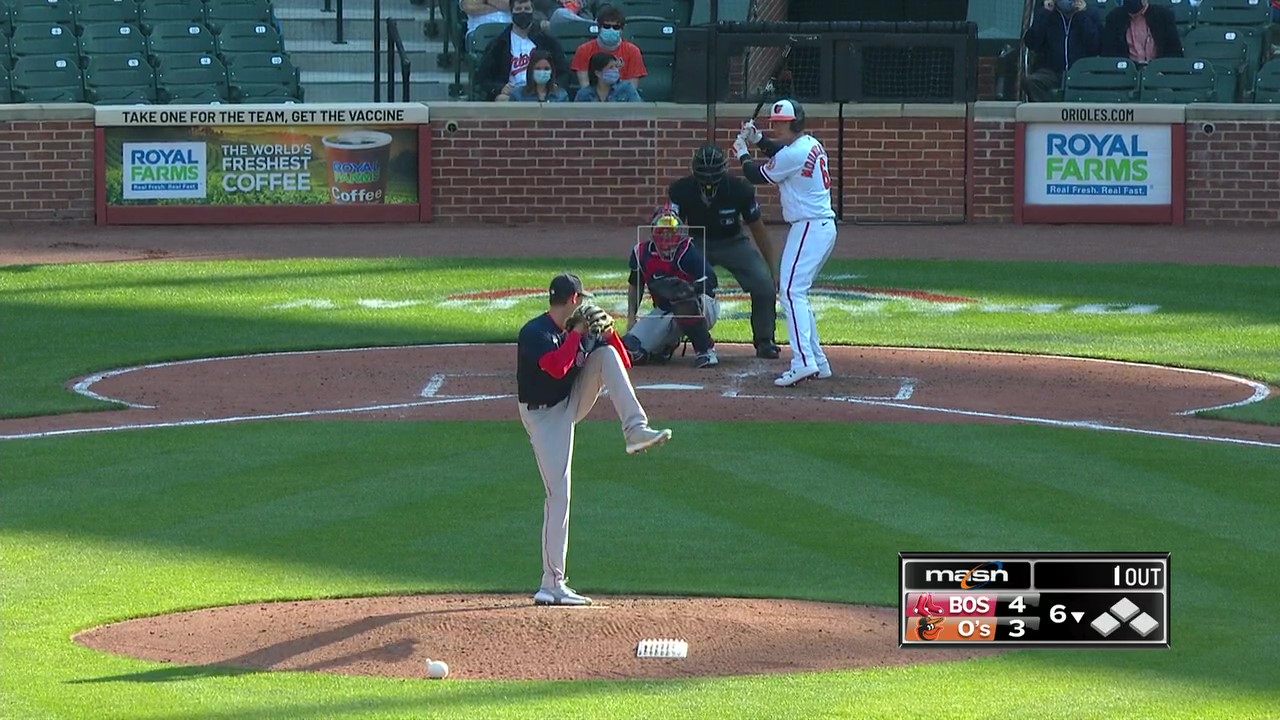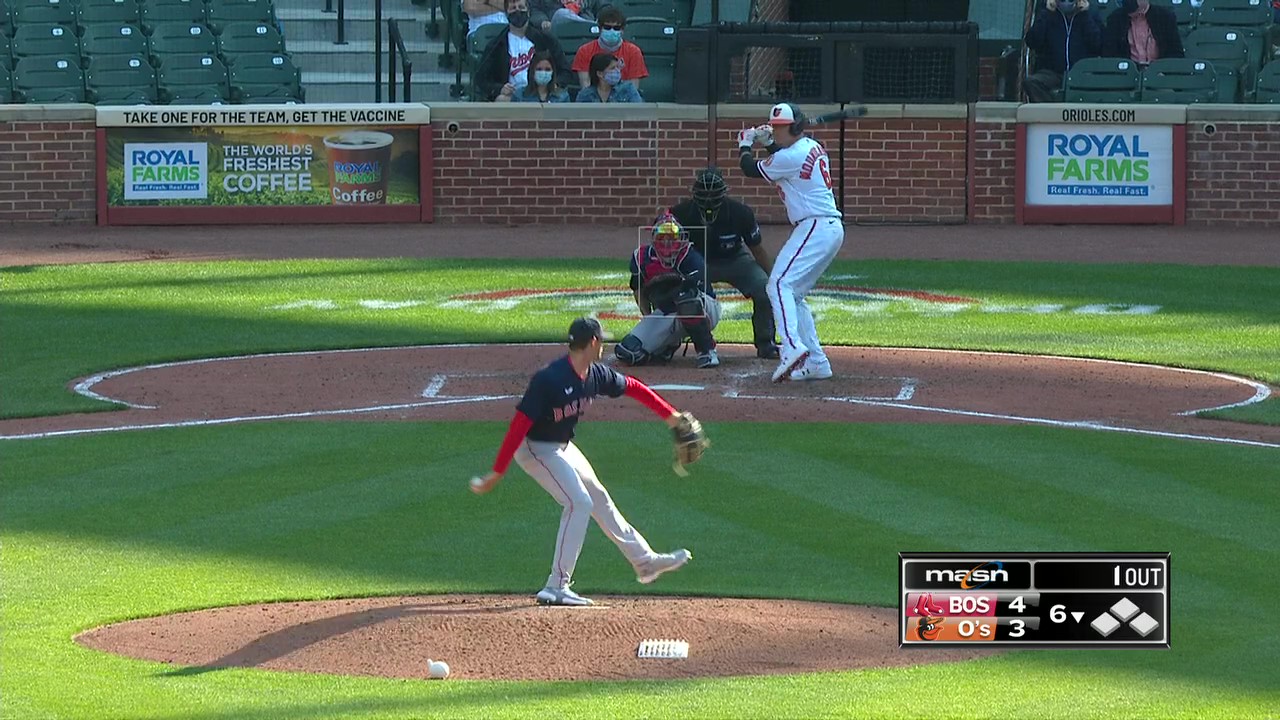I find that most pitchers end up on my radar. I do a lot of leaderboard scouring, and I’m (unfortunately) active enough on Twitter that I’m generally privy to what players are exciting people. Do you know who wasn’t on my radar? Garrett Whitlock wasn’t on my radar. And it wasn’t until I received several messages about Whitlock that he got on my radar. Well now he’s commanding my attention, and I can’t help but to indulge in my intrigue.
If you don’t know much about Whitlock, you’re like me. Until this season, that’s probably how it should have been. We last saw him post a 19.2 K% and 6.1 BB% in Double-A with the Yankees, and although he posted these numbers as a starter, they weren’t exactly numbers that leaped off the page. Then Whitlock had Tommy John surgery in the middle of 2019, and didn’t pitch again until 2021.
The Yankees are one of a few teams who always have a 40-man roster crunch. Because of this, it feels like they’re constantly dealing players who they consider superfluous or who don’t help them enough now. When they can’t deal their bubble players, though, some of their prospects are left exposed to the Rule 5 Draft, leaving the opportunity for teams to plunder eligible players who are left unprotected. The Yankees, being a good team with many good players, were unable to protect Whitlock, and he was plucked by the Red Sox.
Now, I like Whitlock. I think he’s a good reliever. What surprises me is that the initial comments from the Red Sox were that, on top of being a potentially strong reliever, he also had starter upside. Now, after considering several factors, I think he might legitimately be as compelling a force moving forward as he’s been thus far in 2021. Obviously not to this extent, but I think he may continue to exist in this general form: a lot of strikeouts, few walks, a manageable amount of walks, and a lot of ground balls. That’s…pretty much the blueprint for a strong reliever. And perhaps an elite one.
I’m not a Garrett Whitlock expert. I told you I hardly knew who he was! Apparently, no one else is a Garrett Whitlock expert either, because, coming into this season, his changeup didn’t grade out very well. As recently as January, FanGraphs had his changeup as a current 45-grade pitch and future 50-grade pitch. Given its current 48.3 O-Swing% and 25.6 SwStr%, I’d say it’s decidedly not a 45-grade pitch, and hardly a 50-grade pitch either. That thing is looking like a Luis Castillo-level offering, which makes sense! Castillo throws out of a similar arm slot, with similar spin efficiency, and gets similar movement.
The reason I bring this up is that it seems like his changeup had to have changed. It’s unlikely FanGraphs (and several other outlets) would miss the boat on a pitch this badly. As it turns out, Matt Andriese — who himself has a good changeup — took Whitlock under his wing. While playing catch during spring training, the two were having a conversation about Whitlock’s changeup, and Andriese recommended that he change his mindset while throwing the pitch. Whitlock kept his standard circle-change grip, but focused on his arm speed and conviction while throwing it. Instead of the old “grip it and rip it” adage, Andriese suggested that he try and think about killing spin, which likely added some extra movement.
Given that I’m a noted non-Garrett Whitlock expert, I can’t tell you how much his changeup has changed. I can only tell you that it’s different, and it’s good. Whatever the thought process, Whitlock is now armed with a 95 mph sinker, 83 mph changeup, and seldom thrown four-seam fastballs and sliders. Now, I like his changeup a lot, but it’s important to note that, for now, his sinker gets a lot of swings and misses and chases out of the zone — especially for a sinker. That’s likely due to the 12 mph velocity differential between his sinker and changeup, which is one of the wider (if not the widest) differentials in MLB, and the separation in vertical movement between the two is nothing to scoff at either.
When I initially went to take a closer look at Whitlock, I expected him to have a robust seam-shifted wake profile. He almost exclusively throws a sinker and changeup, but he’s mixed in a few four-seam fastballs, and even fewer sliders. After scrutinizing his numbers, his spin profile didn’t bear out my seam-shifted wake hypothesis, and so I went to consult some video. Here’s what I found:
https://gfycat.com/concernedharmfulcapeghostfrog
I don’t know about you, but this is an awfully funky delivery. It’s just…different, right? Oftentimes, pitching is about giving hitters a weird look. Sure, you have to throw it in and near the zone, but being deceptive will get you a lot of the way there. Look at Joey Lucchesi. He doesn’t have good command, and he doesn’t have particularly great stuff. That means that there’s some other force at play and, as Eno Sarris has noted, that appears to be deception. For Lucchesi, that means a lot of moving parts and perhaps some added difficulty for hitters seeing the ball come out of his hand. For Whitlock, it might not be dissimilar.
Let’s consider another pitch. This time, we’ll chop it up into parts. First, Whitlock at the peak of his leg kick:

Perhaps the most unexceptional screenshot in the history of baseball.
Another still image, this time as he extends his leg:

Less unexceptional, but still nothing doing. This is all extremely standard. From this point on is where Whitlock gets funky.
The remainder of Whitlock’s delivery:
https://gfycat.com/groundedwealthycollardlizard
There’s a lot to consider. His arm action is extremely unique. The way he unfurls his arm probably gives hitters a tough look in a similar vein to Lucchesi. Instead of coming out of a higher arm slot, where the ball hides behind Lucchesi’s elbow until the last moment, the ball comes out from the side for Whitlock. But then also, he extends his leg and, although you expect him to go downhill, he sweeps his leg around and then drives down the mound. It’s pretty fascinating. Some pitchers throw across their bodies. At the beginning of his delivery, Whitlock looks like he’s going to do just that. And then he does the opposite.
If you’re reading between the lines, you may notice that what I’m essentially describing extension. Height and wingspan matter there, and at 6’5″, Whitlock isn’t devoid of long limbs. But you also need to be able to get down the mound, and Whitlock does that too. As a result, his 7.2 feet average pitch extension ranks in the 97th percentile league-wide and rivals that of Steve Cishek (7.5 feet), Kenley Jansen (7.3 feet), and Tyler Glasnow (7.3 feet). An interesting note is that while Whitlock is elite by pitch extension, the aforementioned Castillo ranks in the second percentile by pitch extension at 5.5 feet.
Whitlock may never have the repertoire to be a starter. That may be up to the progression of his slider. If his recent performance is any indicator, though, I’m not sure the Red Sox may not want to bounce him around. Perhaps they’ll leave him in the bullpen in a high-leverage role. But then it should also be noted that his leverage index (pLI) is one of the lowest of all relievers, so he hasn’t been tested much to this point.
In any case, mere months ago, Whitlock was an afterthought. Now, he may be primed to be one of the best relievers on a team that looks an awful lot like a playoff team — at least during the early goings of the season. If it all goes right, though, we might be looking at the emergence of one of the most effective relievers in MLB.
Photo by Mark Goldman/Icon Sportswire | Adapted by Justin Paradis (@JustParaDesigns on Twitter)




nice work Michael, keep it up!